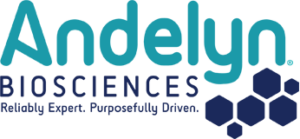
“Andelyn Biosciences has regularly worked with BIA monolithic chromatography columns in our lab scale and scale up process development programs. We were delighted to consult with the Sartorius BIA Separations team by providing advice on the development of an AAV harvest capture methodology that was published in the journal Electrophoresis. We’re excited to see the continuous innovation in chromatography separations for gene therapy applications.”
– Samir Acharya, AD of Process Development, Andelyn Biosciences

“We use BIA Separations Monolith columns for the purification of our mRNA drug substance. The Monolith columns come in multiple sizes to meet our needs from small scale product development work to large scale cGMP manufacturing runs. We have found the Monolith columns to provide high throughput and high purity while being very robust and reliable. In addition, BIA Separations has top notch customer service that never fails to impress.”
– Greg Kubczak, Director of Technical Services and Manufacturing, Arcturus Therapeutics

To improve the pDNA capture, AstraZeneca began by evaluating various chromatography resins, media, and membranes. In the first round of media evaluation tests with a crude E. coli lysate, only monoliths showed very high yield but needed better purity. Conditioning with NaCl improved yields and purity, particularly for monoliths, leading to the selection of CIMmultus DEAE (6 µm) for further development.
Learn how AstraZeneca employs preparative CIMmultus DEAE columns and analytical CIMac pDNA in their improved pDNA purification process.
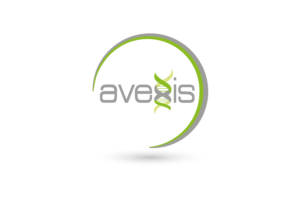
“We are especially grateful that BIA Separations shared, and operated, with the same sense of urgency we did to help bring gene therapy to the SMA community. BIA’s experience with AAV purification and its chromatographic technology were important contributions and we look forward to our continued work together.”
– Andy Stober, Senior Vice President of Technical Operations, AveXis

“I was introduced to the PATfix analytical platform at the BASE Facility for the analysis of plasmid DNA and mRNA. The PATfix pDNA analytical platform package was helpful in getting the plasmid analysis running with validated protocols built-in the system. We have also been utilising PATfix for the analysis of IVT mRNA with validated protocols provided by Sartorius BIA Separations. We have been getting consistent and reliable results with high-throughput work processes made possible by the at-line implementation of the PATfix platform. I am happy with the system as it is easy to use, reliable and the support provided by the highly knowledgeable team at Sartorius BIA Separations and Sartorius has been excellent. I am looking forward to continuing working with the PATfix platform and the Sartorius BIA Separations team with their ongoing developments in providing high-quality analytical products.”
– Dae Jong Han, Research Specialist (Analytics), BASE Facility, Australia.

“The combination of our know-how in pDNA production with BIA’s monolithic columns represent a key enabling step for us to meet our customer´s needs for fast and economic production of large DNA plasmids, such as AAV starting vectors, in quantities required for the clinical development and early market supply of their gene therapy products.”
– Dr Hans Huber, COO, Biomay

“We are very pleased to be collaborating with BIA Separations / Sartorius in developing and tech-transferring optimized mRNA vaccine manufacturing processes. When time is of the essence, it is crucial to be able to rely on key partners whilst maintaining the highest level of quality in every aspect of our work. We are also very proud that our team was able to produce two kinds of genetic vaccines (DNA and mRNA) and we look forward to expanding our partnership with the BIA Separations’ team on future projects.”
– Hong Thai Pham, CEO, BioNet
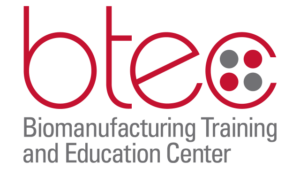
“One very cool feature of the PATfix system is its inline pH and conductivity sensors, which help when running gradients. You don’t just rely on percentage A and percentage B to make assumptions about the gradient; you can actually see it forming through changes in conductivity and pH.”
– Shriarjun Shastry (Arjun), Golden Leaf Biomanufacturing Training and Education Center (BTEC) at NC State University

“The amount of work that’s being done to ensure the quality is definitely on the high end of what’s being done in the industry. The body of work and the confidence that you have in the data because of all the orthogonal measurements that are being collected, and the team going above and beyond and just having an answer to every question, is very impressive. It’s clear the passion that the people and the team have.”
– Chris Dilmore, Process Development Team, Charles River Laboratories
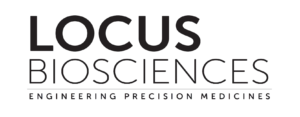
“We have been very happy with the CIM screening plates. They have been incredibly useful for buffer composition screening studies that showed very tight correlation to scaled-up conditions. These are wonderful products that we hope Sartorius will continue to prioritize.”
– Bobby Mills, Senior Development Specialist, Locus Biosciences

“The BIA Separations team has always been very helpful with technical and development support. They’re easy to get in contact with and they’ve come to our London site before. I think their conference [MSS2024] has been a big help, it’s a whole week of speaking to every single BIA expert and scientist available and it’s been great to get so many opinions from different people and just to hear about new products and new methods that are coming out and also to speak with other people that are doing similar methods and to hear what they have to say about them.”
– Holly Whitehead, Analytical Development Scientist, MeiraGTx

“The human capital at BIA is amazing. People are dedicated; it’s not only the column, it’s basically the people behind it that can help you improve your production and analytics at every step. From a CMC standpoint, this is super important. I don’t think there is any other company that can do that. The know-how at BIA is really amazing, and the ability to look at pure products at the end with analytical tools is what makes makes them different from everyone else.”
– Dan Peer, Vice President for Research and Development, NeoVac

“I’ve worked with the BIA team for quite some time, but here [MSS2024] I had the opportunity to realize that so many young scientists at BIA, some talented people, are contributing and are very ambitious to do better work and support advancements in the technology. The average age of this young team was a big surprise for me and a very nice development.”
– Manfred Reiter, Managing director, Nuvonis

Working with Sartorius BIA Separations, Pharmaron was able to extend its toolbox of AAV purification solutions, providing multiple-modality options to achieve robust separation of genome-containing (full) from genome-free (empty) viral capsids with high purity and yield for multiple AAV serotypes. During this collaboration, a strong partnership was developed leading to Sartorius BIA separations presenting the work at the second webinar of the Pharmaron Cell and Gene Therapy webinar series. The webinar was entitled “Downstream AAV Production: A Targeted Approach to Optimization”.

“By leveraging the capabilities of PATfix, I can effectively determine the ratio of empty and full capsids in our samples, thus providing valuable insights into their purity values. The software’s integration functions are designed with user-friendliness in mind, making the analysis process seamless and efficient.”
– Tony Tavares, PhD | Principal Scientist. Teknova

“I highly appreciated the willingness of each expert from different monoliths and various applications to support our work, explain new methods, introduce new approaches, and offer further technical support in our product development. I feel like I can really delve into the depths of product characterization, and I believe I can gain much more data from the PATfix system, which I’m really eager to explore in the future.”
– Sonia Celej, Bioprocess Development Specialist, Theriva Biologics

“We have been using mostly the monolith columns with the Oligo dT ligands, and these have been really good because they have high flow rates and convective flow. This was very suitable for our continuous chromatography work. We could clearly take advantage of these high flow rates and set up continuous chromatography with these columns in a very efficient way. That was in terms of the products, but also on the other side, it was always very nice to learn about the work done by the BIA Separations team, especially Rok’s team [Rok Sekirnik] on process development. They have been doing excellent work both on RNA synthesis and the IVT reaction, and also on the purification part. It was always very nice to look at that, and all this, of course, is supported by analytics developed by BIA as well. It’s always very nice to see Rok’s team basically going to the fundamentals, understanding the science behind different parts of the process, and optimizing it that way. That is the approach we take as well, so it’s always nice to see it working so well in practice.”
– Zoltán Kis, Associate Professor, University of Sheffield
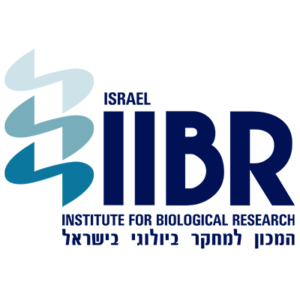
“When I first used the CIMmultus PrimaS column, my technician conducted an experiment to analyze the endotoxins. When he brought me the results, I told him it was impossible for the endotoxin level to be so low and sent him to analyze it again. When he returned with the same results, I realized I had a winning column for my research and process development in bacteriophage products.”
– Dr. Arik Makovitzki, Israel Institute of Biological Research

The implementation of DEAE monolith technology has allowed VGXI to enhance their pDNA purification process, achieving significant improvements in yield and batch-to-batch consistency. “With monolith technology, we observed purification yields as high as 70% for smaller 5KB plasmids and 30% for larger 13KB plasmids, compared to historical yields of 10% or less for sequences over 12KB. The ability to clean and reuse monoliths further optimized our workflows, reducing costs and supporting large-scale production. These results demonstrate the effectiveness of monoliths in processing larger plasmids, with yields significantly higher than previous technologies.”
– Christy Franco, VGXI

“PATfix is a really straightforward device. It comes with fully developed methods and foolproof SOPs that really minimize your developmental activities, so you can basically start measuring your samples right away”
– Michael Daume, WACKER Biotech
